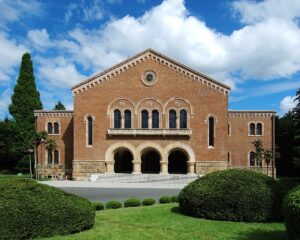Ryukyu Mura (Onna Village, Okinawa Prefecture)
Overview (history, characteristics, attractions)
Ryukyu Mura is a theme park-style facility that recreates and preserves Okinawa's traditional culture and lifestyle. Actual old houses (relocated from the Ryukyu period to the Showa period) have been relocated and restored, recreating red-tiled roofs, stone walls, and Okinawa's unique garden scenery. In addition to being able to casually observe traditional performing arts such as the sanshin, Ryukyu dance, and Eisa, the facility also features exhibits of folk tools and crafts, a corner where you can try out traditional crafts, and dining facilities serving local cuisine. It functions not only as a tourist spot but also as a place to preserve the local culture, and its appeal lies in the opportunity to experience Okinawa's "lifestyle" and "festivals" all at once.
Highlights
- Relocated old houses: You can stroll through an area that recreates an old village, featuring traditional Okinawan houses with red tiled roofs, stone walls, and a communal well.
- Traditional performing arts performances: Performances of sanshin, Ryukyu dance, Eisa, and more are held at different times each day, allowing you to enjoy them up close (several times a day).
- Experience Programs: You can experience Okinawan culture through hands-on activities such as painting Shisa, making Ryukyu glass or pottery, playing the sanshin, and dyeing (such as Bingata) workshops (contents may change depending on the season and operation).
- Folk crafts and souvenir shops: Local crafts and specialties such as Yachimun (pottery), Bingata, Sanshin, and Okinawan sweets are available.
- Local cuisine restaurants: There are restaurants and food stalls where you can enjoy Okinawa soba, Goya Chanpuru, Okinawa-style snacks and sweets.
Access (nearest station, transportation, etc.)
- car: From Naha Airport, take National Route 58 or the Okinawa Expressway for approximately 50-70 minutes (depending on traffic conditions). Parking is available. The most convenient way to get around Onna Village is by car.
- Local bus: Accessible by bus from Naha. Routes and schedules vary depending on the season and route, so please check the bus company timetable or Google Maps in advance. The nearest bus stop is within walking distance.
- Tours and transfers: It is often included in sightseeing tours departing from and returning to Naha, so it is easy to visit by joining a tour.
- Public transportation precautions: There is no train (monorail) to the central or northern parts of Okinawa's main island, and public transportation is mainly by bus. There are times when there are few buses, so please be careful about the time of your return trip.
Estimated stay (estimated time required)
- Get a feel for the atmosphere in a short time: 1 to 1.5 hours (just a quick look at the exhibits and the exterior)
- Relaxed enjoyment: 2-3 hours (including performance, workshop, and meal)
- If you are planning to do multiple experiences, you should plan on spending about half a day (3-4 hours) to allow for ample time.
Nearby spots
- Cape Manzamo - A cliff with a spectacular view, popular for watching the sunset and taking commemorative photos (a short drive away).
- Cape Maeda (Blue Cave) - A famous spot for snorkeling and diving (tours recommended).
- Onna Village Beaches (various paid and free beaches) - Convenient for marine activities and swimming.
- The surrounding resort hotels are a base for day trips to hot springs, restaurants, and marine experiences.
Things to be aware of (crowds, manners, seasonal precautions, etc.)
- congestion: During tourist seasons (summer vacation, Golden Week, New Year's holidays) and long weekends, the number of visitors increases, and parking lots and performance venues become crowded. If you want to avoid crowds, consider visiting on a weekday or right after opening.
- Performance Schedule: The start times of performances and experiences may vary depending on the day. If there is a performance or experience you would like to see, please check the schedule for that day in advance on the facility's notice board or official website.
- Clothing and heat precautions: In Okinawa, summer is hot, humid, and the sun is strong. Don't forget to bring a hat, sunscreen, and hydrate. As the tour will be mostly outdoors, we recommend wearing comfortable walking shoes.
- Rain and typhoon seasonOutdoor programs may be canceled or changed during the rainy season and typhoon season. If your trip falls during the rainy season (May to June) or typhoon season (summer to autumn), please pay close attention to weather information.
- Handling of cultural properties and exhibitsPlease observe the facility rules when visiting, such as not touching old folk tools or exhibits, and not entering without permission. Please be aware that traditional houses have steps and thresholds, and there are also places where you need to take off your shoes.
- Barrier-free: Traditional houses and areas with many steps may be difficult to navigate in a wheelchair. We recommend contacting the facility in advance to inquire about access and wheelchair accessibility.
- Payment and Reservation: Workshops may be fully booked during busy times. If there is an experience you would like to participate in, we recommend making a reservation in advance or registering early. Also, some stores and experiences only accept cash, so it's a good idea to have some cash on hand.
Before visiting, please check the Ryukyu Mura official website or social media for the latest information (opening hours, admission fees, experience menu, event status, etc.). This is a spot where you can experience Okinawa's traditional culture firsthand, so please make sure you have plenty of time to enjoy it.



